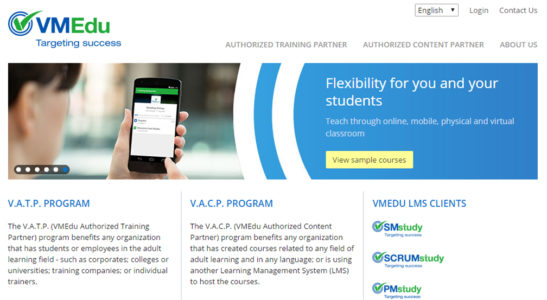PMP Exam Prep: Course Overview
The 4-Day PMP-Prep classroom course is structured with the goal of providing students exactly what they need to pass the PMP exam. Coursework is focused on the key topics and knowledge areas required for success on the exam. Our study strategy will increase comprehension and retention of key elements, while also providing students with practical information that can be applied immediately to the project work environment.
PMstudy provides the Most Comprehensive and Highest Quality PMP-Prep Classroom Training, which includes:
- 200+ page PMstudy PMP-Prep Workbook
- Chapter and Final Test Workbooks with PMP exam style
questions
- Quick Reference Guide, Process Chart Worksheets and Study
Aids
- Two month Complimentary Access to PMstudy 100% online
course (includes 800+ practice questions with detailed
explanations AND 4 full-length simulated exams)
- Valuable exam-taking tips
- 40 PMI approved contact hours
Course content (Based on PMBOK Guide – 5th edition):
The course content covers PMBOK Guide – Fifth Edition concepts and includes Professional Responsibility. Several topics which are not included in the PMBOK Guide – Fifth Edition but about which questions are regularly asked in the PMP exam are also covered. There is an optimal balance between PMP exam prep and understanding concepts for practical application.
1. Introduction
- About PMI and PMP exam
- Exam-Taking Tips
- Course Overview
- Process Chart
2. Project Management Framework
- What is a project?
- Project Stakeholders
- Organizational Structure
- Product Life Cycle, Project Life Cycle, Project
Management Life Cycle
3. Project Integration Management
- Overview of Project Integration
- Develop Project Charter
- Develop Project Management Plan
- Direct and Manage Project Work
- Monitor and Control Project Work
- Perform Integrated Change Control
- Close Project or Phase
4. Project Scope Management
- Overview of Project Scope Management
- Plan Scope Management
- Collect Requirements
- Define Scope
- Create WBS
- Validate Scope
- Control Scope
5. Project Time Management
- Overview of Project Time Management
- Plan Schedule Management
- Define Activities
- Sequence Activities
- Estimate Activity Resources
- Estimating Activity Durations
- Develop Schedule
- Control Schedule
6. Project Cost Management
- Overview of Project Cost Management
- Plan Cost Management
- Estimate Costs
- Determine Budget
- Control Costs
7. Project Quality Management
- Overview of Project Quality Management
- Plan Quality Management
- Perform Quality Assurance
- Control Quality
8. Project Human Resource Management
- Overview of Project Human Resource Management
- Plan HR Management
- Acquire Project Team
- Develop Project Team
- Manage Project Team
9. Project Communication Management
- Overview of Project Communication Management
- Plan Communications Management
- Manage Communications
- Control Communications
10. Project Risk Management
- Overview of Project Risk Management
- Plan Risk Management
- Identify Risks
- Perform Qualitative Risk Analysisc
- Perform Quantitative Risk Analysis
- Plan Risk Responses
- Control Risks
11. Project Procurement Management
- Overview of Project Procurement Management
- Plan Procurement Management
- Conduct Procurements
- Control Procurements
- Close Procurements
12. Project Stakeholder Management
- Overview of Project Stakeholder Management
- Identify Stakeholders
- Plan Stakeholder Management
- Manage Stakeholder Engagement
- Control Stakeholder Engagement
13. Professional Responsibility
- Professional Responsibility
14. Review & Final Evaluation Test
- Structured Concentrated Review of all Chapters
- Final Test Questions
- End of Course Questions/Next Steps
PMstudy PMP Exam Prep: Classroom Daily Schedule
Typically the 4 day program runs from Monday to Thursday
between 8:00 AM to 6:00 PM
DAY 1: Introduction
* Project Management Framework
* Project Integration Management
* Project Scope Management(Section &Chapter Quizzes throughout the day. Homework assigned)
DAY 2: Project Time Management
* Project Cost Management
* Project Quality Management
* Project Human Resource Management (Section & Chapter Quizzes throughout the day. Homework assigned)
DAY 3: Project Communication Management
* Project Risk Management
* Project Procurement Management
* Project Stakeholder Management (Section & Chapter Quizzes throughout the day. Homework assigned)
DAY 4: Final Evaluation Test Part I
* Concentrated Review
* Final Evaluation Test Part II
* Review & Next Steps





